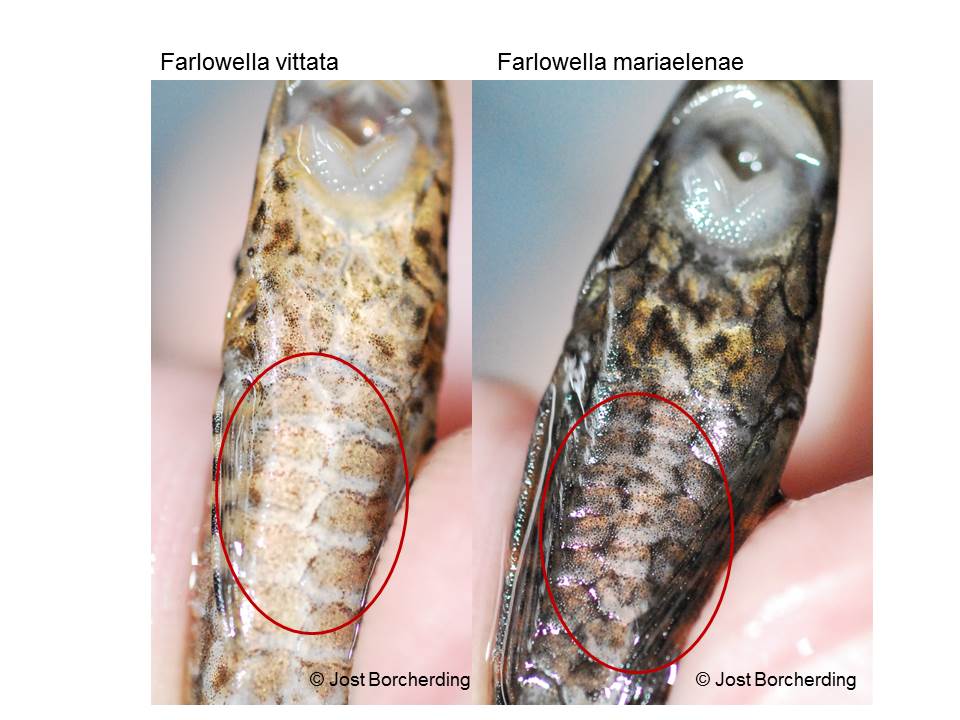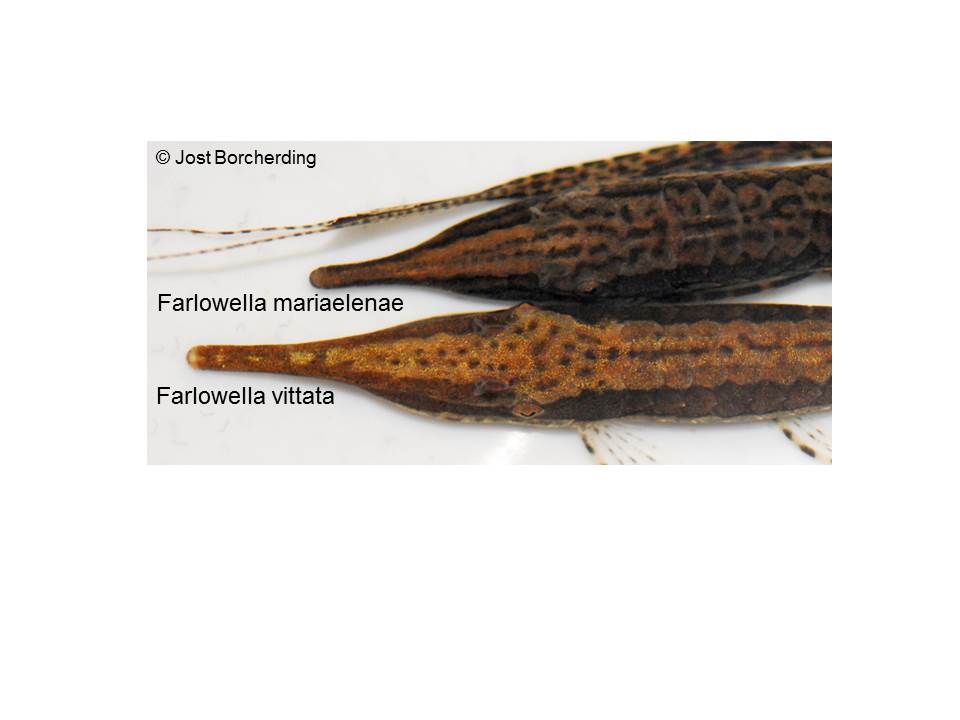Farlowella vittata
At the end of 2018, I was able to purchase a few fish from a dealer who listed them as Farlowella acus in the stock list. After reading the original paper, it quickly became clear that it could not be this species (Retzer, M.E. & Page, L.M., 1997: Systematics of the stick catfishes, Farlowella Eigenmann & Eigenmann (Pisces, Loricariidae). Proceedings of the Academy of Natural Sciences of Philadelphia, 147: 33-88). After clarifying that the fish had been imported from Colombia, I was able to identify them as Farlowella vittata, at least most of them. However, there were a few individuals that looked a little different. And I finally categorised these as Farlowella mariaelenae (this classification was also confirmed by Norman Behr and Ingo Seidel). This is also emphasised by the information on PlanetCatfish (Commonly imported mixed in with the more common Farlowella vittata with which it shares its habitat. F. mariaelenae can be distinguished by its thinner rostrum and three, versus two in F. vittata, rows of belly scutes).
The differences are most obvious on the ventral side; while F. vittata has only two rows of ventral plates in the central area from the pectoral fin, F. mariaelenae has three.
But the head shape is also slightly different (slightly shorter rostrum), a feature that can probably only be used in direct comparison.



